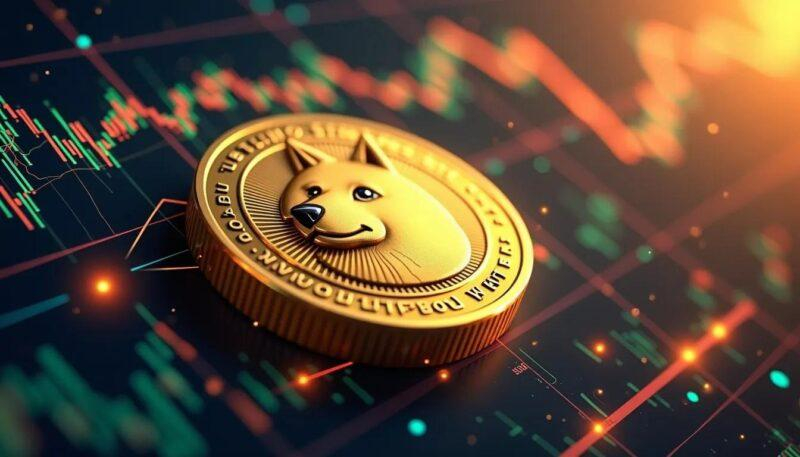In the rapidly evolving world of cryptocurrency, Dogecoin has carved out a unique niche-part meme, part digital currency, and wholly beloved by a passionate community. While mining Dogecoin individually can be a shot in the dark, joining forces through a mining pool amplifies both efficiency and potential rewards. But what if you took control entirely, creating your own Dogecoin mining pool from scratch? This article will guide you through the essential steps and considerations to build a personalized mining pool, demystifying the process and empowering you to dive deeper into the Dogecoin ecosystem with confidence and clarity.
Understanding the Fundamentals of Dogecoin Mining and Its Network
At its core, Dogecoin mining operates on the principles of Proof of Work, relying on miners to solve complex cryptographic puzzles that validate and secure transactions across the network. Unlike Bitcoin’s SHA-256 algorithm, Dogecoin employs Scrypt hashing, a memory-intensive function that enables faster block generation times – approximately one every minute. This efficiency not only accelerates transaction confirmation but also makes the network more accessible to users with consumer-grade hardware, fostering a wide and diverse mining community.
Mining Dogecoin within a pooled environment introduces collaboration and resource sharing among individual miners, boosting the probability of discovering new blocks and earning rewards consistently. When creating your own mining pool, understanding the reward distribution methods is vital. Pools often utilize systems like Pay-Per-Share (PPS), Proportional, or Pay-Per-Last-N Shares (PPLNS), each influencing how miners receive payouts based on their contributed work. Selecting the appropriate scheme impacts user satisfaction and the long-term sustainability of your pool.
Building a successful Dogecoin mining pool demands not only technical savvy but also robust network infrastructure. Key components include:
- Stratum Protocol Implementation: Facilitates efficient communication between miners and the pool server.
- Reliable Share Verification: Ensures submitted hashes meet difficulty thresholds without errors or duplications.
- Metrics & Monitoring Dashboards: Provide real-time data on miner performance and pool health.
| Component | Purpose | Impact |
|---|---|---|
| Stratum Protocol | Communication | Reduced latency, better miner-server sync |
| Share Verification | Validation | Integrity & fairness of rewards |
| Monitoring Dashboard | Analytics | Improved management and user trust |
Selecting the Right Hardware and Software for Efficient Pool Setup
Building a powerful Dogecoin mining pool demands a careful balance between hardware performance and budget efficiency. At the core, your mining servers need reliable GPUs or ASIC miners capable of hashing at high speeds without overheating. For small to medium pools, consider GPUs from the latest generation, such as the NVIDIA RTX 30-series or AMD Radeon RX 6000-series. These provide a good mix of power consumption and hashing efficiency. Meanwhile, for larger-scale operations, specialized ASIC hardware like the Innosilicon A2 can dramatically boost your pool’s collective hashing power, giving you an edge in block discovery rates.
Choosing the right software is equally critical. The software should be both stable and scalable, allowing easy user management, real-time monitoring, and effective payout distribution. Popular open-source mining pool software such as CoiniumServ, NOMP, or MPOS offer robust frameworks with customizable options to tailor the pool environment to Dogecoin’s specifications. Additionally, integrating features like automatic difficulty adjustment and Stratum protocol support can help optimize miner participation and improve overall efficiency.
| Hardware Component | Average Hashrate | Power Consumption | Estimated Cost |
|---|---|---|---|
| NVIDIA RTX 3080 | 90 MH/s | 220 W | $700 |
| AMD Radeon RX 6800 XT | 64 MH/s | 250 W | $650 |
| Innosilicon A2 ASIC | 500 MH/s | 2100 W | $3,500 |
Finally, a seamless integration between your hardware and software boosts both performance and security. Prioritize solutions that support frequent updates and allow you to manage your nodes remotely. This flexibility ensures your mining pool remains competitive, scalable, and adaptive as the Dogecoin network evolves. Always monitor metrics closely and be ready to upgrade components based on real-time effectiveness, avoiding bottlenecks that can impede your pool’s overall success.
Configuring Your Mining Pool Server for Optimal Performance
To achieve lightning-fast response times and keep your Dogecoin mining pool humming smoothly, start by fine-tuning your server’s hardware and network configuration. Prioritize a low-latency, high-bandwidth connection to reduce communication delays between miners and your pool. Equipping your server with a multi-core CPU and ample RAM ensures it can effortlessly handle a surge of simultaneous mining shares without bottlenecks. Don’t underestimate the power of a solid-state drive (SSD) for faster database read/write operations, especially when tracking huge volumes of submitted shares in real-time.
Effective load balancing is a cornerstone of optimal pool performance. Distributing miner requests across multiple server instances helps prevent overload and maintains uptime during peak activity. If your setup grows, integrating a reverse proxy or using cloud-based load balancers can scale resource demands without hiccups. Additionally, consider implementing caching mechanisms for frequently accessed data like miner stats and payout queues; this drastically cuts down on database queries and accelerates page load times for your users.
Security and monitoring should go hand in hand with performance tweaks. Enable firewalls tailored to allow only mining protocol traffic and invest in robust DDoS protection services to shield your pool from attacks that could cripple performance. Real-time monitoring dashboards help you spot resource spikes or network issues early, letting you fine-tune configurations promptly. Below is a quick cheat sheet for key server configurations that boost pool responsiveness and reliability:
| Configuration | Recommended Setting | Impact |
|---|---|---|
| CPU Cores | 8+ Cores | Handle heavy connection loads |
| RAM | 32 GB+ | Support simultaneous sessions |
| Disk Type | NVMe SSD | Fast database access |
| Network Bandwidth | 1 Gbps or higher | Minimize latency |
| Load Balancing | Round Robin with health checks | Even resource distribution |
| Security | Firewall + DDoS Protection | Stable uptime |
Implementing Secure Payment Systems to Distribute Rewards Fairly
When distributing rewards within your Dogecoin mining pool, ensuring secure and transparent payment processing is paramount. A robust payment system not only protects miners’ earnings from vulnerabilities but also builds trust among participants. Implementing multi-layer authentication protocols and encrypted transaction channels can drastically reduce the risk of attacks such as double-spending or unauthorized withdrawals. Leveraging blockchain’s inherent transparency, you can validate payouts in real-time, providing miners with clear visibility into the reward allocation process.
Choosing the right payout structure is just as crucial as its security. Systems such as Pay-Per-Share (PPS), Pay-Per-Last-N-Shares (PPLNS), or score-based methods must be underpinned by precise accounting algorithms to ensure fairness. Automated smart contracts or custom scripts, triggered after block verification, can calculate shares accurately and initiate payments without human intervention-minimizing errors and delays. Integrating with trusted payment APIs or cryptocurrency wallets that support multi-signature transactions further enhances payment accountability.
Key features to prioritize in your payment system include:
- End-to-end encryption for data integrity during transmission
- Automated payout scheduling with customizable thresholds
- Comprehensive transaction logs accessible to miners
- Dispute resolution mechanisms backed by transparent payout history
- Compatibility with popular Dogecoin wallets and exchanges
| Feature | Benefit | Implementation Tip |
|---|---|---|
| Multi-Signature Wallets | Prevents unauthorized fund access | Require at least 2-of-3 signatures for payouts |
| Automated Scripts | Eliminates manual payout errors | Use cron jobs to trigger reward distribution |
| Encrypted Payment Channels | Secures payout transactions | Implement TLS and industry-standard encryption |
Monitoring and Maintaining Your Dogecoin Mining Pool for Long-Term Success
Consistent monitoring is the backbone of any thriving Dogecoin mining pool. To ensure seamless operations, establish real-time dashboards that track pool hashrate, connection stability, and miner payouts. Automate alerts for abnormal hash drops or spikes in latency so you can swiftly address any disruptions. Maintaining transparent communication with your miners through regular updates will build trust and foster a committed community.
Preventative maintenance goes beyond just monitoring – it requires a proactive approach to software updates, hardware health, and security patches. Schedule periodic audits for your server infrastructure to identify potential bottlenecks and vulnerabilities. Incorporate load balancing techniques and backup nodes to eliminate single points of failure, ensuring your pool remains resilient during traffic surges or unexpected downtimes.
Implementing a straightforward performance tracking system helps you analyze miner behavior and payout fairness over time. Below is a simple reference table outlining key performance indicators (KPIs) every mining pool operator should track:
| KPI | Purpose | Ideal Range |
|---|---|---|
| Hashrate Stability | Ensures consistent mining power | Above 95% |
| Pool Uptime | Measures server reliability | 99%+ |
| Payout Timeliness | Confirms prompt miner rewards | Within 24 hours |
| Latency | Assesses connection responsiveness | Under 200ms |
By keeping a vigilant eye on these metrics and combining it with preventive maintenance strategies, your Dogecoin mining pool will stay competitive and rewarding for every participant involved.
Q&A
Q&A: How to Build Your Own Dogecoin Mining Pool From Scratch
Q1: What exactly is a Dogecoin mining pool?
A mining pool is a group of cryptocurrency miners who combine their computational resources over a network to increase the chances of finding a block. For Dogecoin, this means collaboratively mining coins and sharing the rewards proportionally, rather than mining solo and facing potentially long waits for rewards.
Q2: Why would someone want to build their own Dogecoin mining pool?
Building your own pool gives you control over fees, payout structures, and the mining experience. It can foster a community of miners, reduce dependency on third-party pools, and potentially generate revenue if managed effectively.
Q3: What are the main technical components needed to build a Dogecoin mining pool?
You’ll need several core components:
- A server infrastructure capable of handling miner connections and job assignments.
- Mining pool software that coordinates work distribution (e.g., open-source projects like NOMP or MPOS).
- A wallet daemon running on Dogecoin core to handle transactions and pay miners.
- A database to track shares, payouts, and miner stats.
- A web interface for miners to monitor stats and payouts.
Q4: Which programming languages and technologies are commonly used?
Mining pool software often uses Node.js, Python, PHP, or Go. The Dogecoin core wallet is C++. Databases like MySQL or PostgreSQL are common for tracking tasks. Web frontends typically use HTML/CSS/JavaScript.
Q5: How do you connect your pool to the Dogecoin network?
You run a fully synchronized Dogecoin full node (dogecoind) that connects to the Dogecoin blockchain. The mining pool software interacts with this node to submit found blocks, generate new work, and send payouts.
Q6: What is the significance of “shares” in a mining pool?
Shares are partial proofs-of-work submitted by miners to prove their contributed efforts. They represent a miner’s share of the total work and are used to calculate how much to payout each participant.
Q7: How do payouts typically work in a Dogecoin mining pool?
Payouts are usually proportional to shares submitted, but models vary:
- Pay-Per-Share (PPS) guarantees fixed payment per share.
- Proportional pays based on each miner’s contribution after a block is found.
- PPS+ and other hybrid methods mix features for fairness and security.
Q8: What are the security considerations?
Security is critical! Protect your server from DDoS attacks, secure wallet private keys, validate mining shares carefully to prevent fraud, and use SSL/TLS encryption for miner connections.
Q9: How much technical expertise is required?
Moderate to advanced knowledge of blockchain technology, Linux server management, networking, and software development is essential. Testing on testnets before going live reduces risk.
Q10: Are there legal concerns when running a mining pool?
Regulations vary globally. Ensure compliance with local laws, especially around cryptocurrency operations, money transmission, and taxation.
Q11: What are the biggest challenges in building your own Dogecoin mining pool?
Dealing with network latency, keeping your node fully synced, balancing payout fairness, securing the platform, and maintaining uptime under heavy load are common hurdles.
Q12: Where can I start learning and finding resources?
Explore open-source pools on GitHub, Dogecoin developer forums, cryptocurrency mining communities, and official Dogecoin documentation. Tutorials and guides often provide step-by-step breakdowns.
Building a Dogecoin mining pool is a rewarding technical adventure combining blockchain know-how, server administration, and community building. With patience and precision, you can create a hub that accelerates Dogecoin mining for yourself and others.
In Retrospect
Building your very own Dogecoin mining pool from scratch is more than just a technical endeavor-it’s an invitation to join a vibrant community and contribute to the decentralized future of cryptocurrency. While the setup requires careful planning, coding savvy, and perseverance, the rewards extend beyond just coin rewards; they include a deeper understanding of blockchain mechanics and the satisfaction of creating something from nothing. Whether you’re a hobbyist miner or an aspiring entrepreneur, this journey equips you with invaluable skills and a front-row seat in the evolving world of digital currency. So gear up, dive in, and may your pool run smoothly with plenty of blocks-and Dogecoin-to share!







